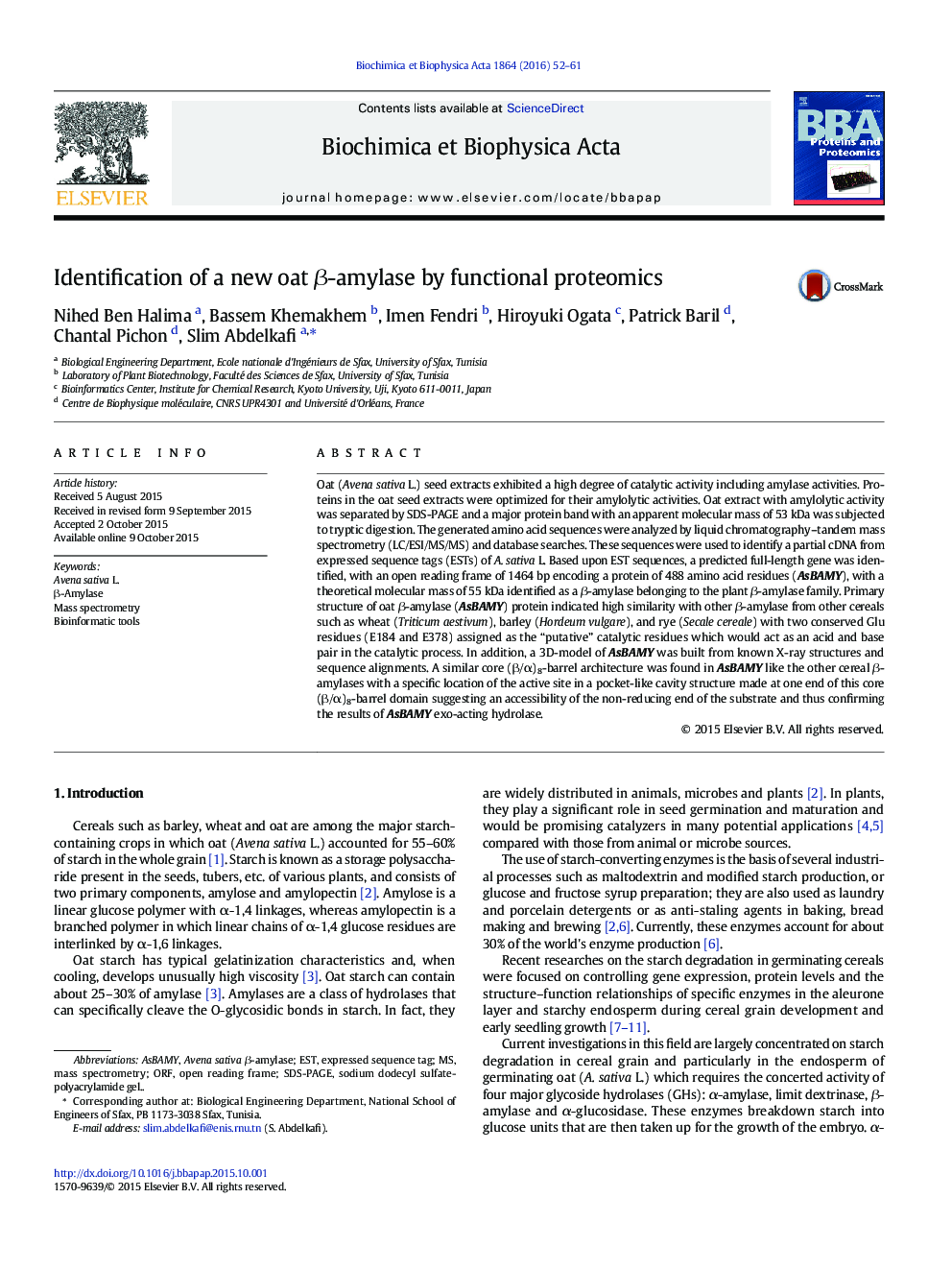| کد مقاله | کد نشریه | سال انتشار | مقاله انگلیسی | نسخه تمام متن |
|---|---|---|---|---|
| 1178223 | 962674 | 2016 | 10 صفحه PDF | دانلود رایگان |

• Oat (Avena sativa L.) seed extracts exhibited a high degree of catalytic activity including amylase activities.
• Based upon EST sequences, a predicted full-length gene was identified with an open reading frame of 1464 bp.
• 3D-model of AsBAMY built from known X-ray structures and sequence alignments
• AsBAMY with a specific location of the active site in a pocket-like cavity structure is an exo-acting hydrolase.
Oat (Avena sativa L.) seed extracts exhibited a high degree of catalytic activity including amylase activities. Proteins in the oat seed extracts were optimized for their amylolytic activities. Oat extract with amylolytic activity was separated by SDS-PAGE and a major protein band with an apparent molecular mass of 53 kDa was subjected to tryptic digestion. The generated amino acid sequences were analyzed by liquid chromatography–tandem mass spectrometry (LC/ESI/MS/MS) and database searches. These sequences were used to identify a partial cDNA from expressed sequence tags (ESTs) of A. sativa L. Based upon EST sequences, a predicted full-length gene was identified, with an open reading frame of 1464 bp encoding a protein of 488 amino acid residues (AsBAMY), with a theoretical molecular mass of 55 kDa identified as a β-amylase belonging to the plant β-amylase family. Primary structure of oat β-amylase (AsBAMY) protein indicated high similarity with other β-amylase from other cereals such as wheat (Triticum aestivum), barley (Hordeum vulgare), and rye (Secale cereale) with two conserved Glu residues (E184 and E378) assigned as the “putative” catalytic residues which would act as an acid and base pair in the catalytic process. In addition, a 3D-model of AsBAMY was built from known X-ray structures and sequence alignments. A similar core (β/α)8-barrel architecture was found in AsBAMY like the other cereal β-amylases with a specific location of the active site in a pocket-like cavity structure made at one end of this core (β/α)8-barrel domain suggesting an accessibility of the non-reducing end of the substrate and thus confirming the results of AsBAMY exo-acting hydrolase.
Figure optionsDownload high-quality image (141 K)Download as PowerPoint slide
Journal: Biochimica et Biophysica Acta (BBA) - Proteins and Proteomics - Volume 1864, Issue 1, January 2016, Pages 52–61